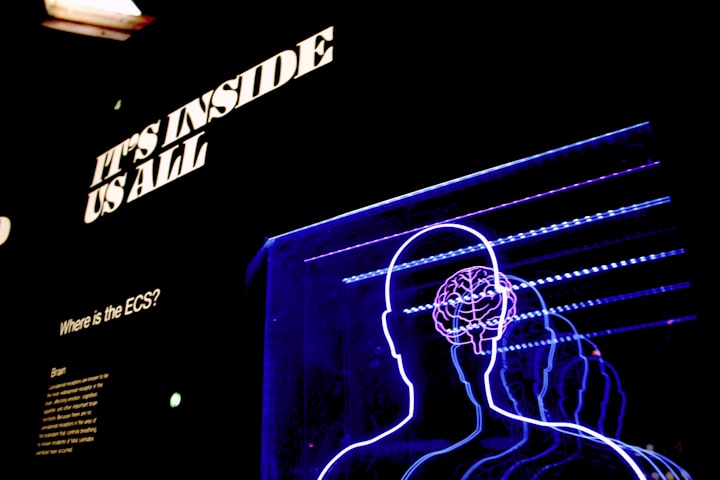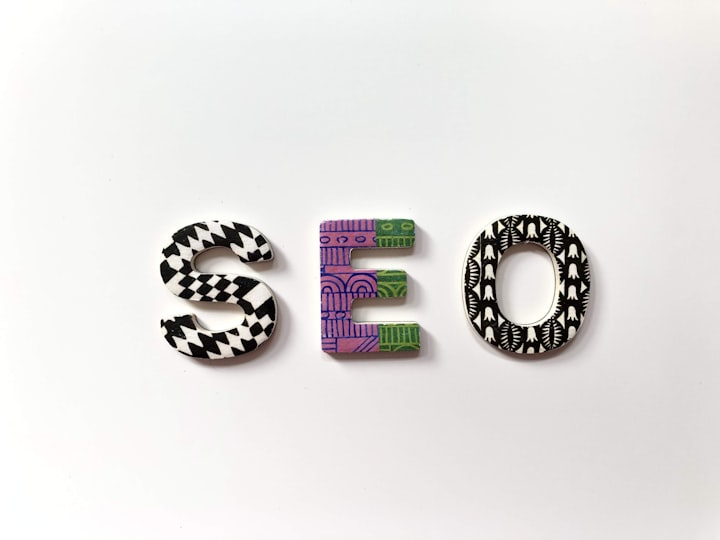10 Psychological persuasion techniques to boost your marketing
From early cave paintings to today’s billboards, we’ve always looked for ways to get people to act in a certain way.

Persuasion is the art of getting people to change their minds, and it’s been around since the dawn of time. From early cave paintings to today’s billboards, we’ve always looked for ways to get people to act in a certain way. Thanks to scientific research on human behavior, though, we now know exactly how persuasive techniques work — and how you can use them in your own marketing efforts.
The scarcity rule
The scarcity rule is one of the most powerful persuasion techniques. If you have something and someone else doesn’t, it’s going to feel like you’re on top of a pile of gold.
If you want to use this in your marketing, here are some examples:
Tell people that the product they’re looking at is only available for a limited time. This can be done by saying things like “limited edition” or “limited availability”.
Increase the number of items that are available in each batch. For example, if you were selling t-shirts with your brand’s logo on them, you could advertise how many shirts were left before your stock ran out completely.
To use this technique in your own life (and not just in marketing), there are two things to keep in mind:
Make sure that what you’re offering actually is scarce;
Don’t try too hard! If someone thinks that something isn’t scarce but then finds out otherwise anyway, they will probably resent having been tricked into thinking otherwise.
The contrast effect
The contrast effect is a phenomenon that describes the change in the perceived value of an option after it has been compared with another option. The contrast effect is more powerful when the two options are extreme, and it’s even more powerful when they’re presented simultaneously.
How does this work? Consider this example: you go to buy a new TV, and you see that there are two models available for purchase: one for $500 and another for $800. Which model would you choose? Most likely, because of the contrast effect, you’ll choose the cheaper model (the $500 TV) due to its low price and high value relative to its competitor — but what if we were able to present them at once and show how similar they really are? What if both TVs had comparable features but differed slightly in quality or design? Would your mind be changed so quickly?
The answer most certainly would be yes! And this concept applies not only to purchasing decisions but also to social behaviors as well. How many times have we seen someone post something about their life on Facebook only for us all of us immediately comment on how great everything seems just so they can receive validation from us (and our friends)? We want people around us who make us feel good about ourselves; otherwise, why would anyone bother following other people on social media sites like Facebook or Twitter?

The serial position effect
This is a classic and well-known psychological phenomenon that has been extensively researched. It refers to the fact that people tend to remember the first and last items in a list more than other items. For example, if you ask someone whether or not they have ever heard of the names John F. Kennedy, Martin Luther King Jr., and Abraham Lincoln, chances are they’ll say yes — but then tell you those names were all presidents of the United States (or at least they will if they’re not American). In this case, it’s because JFK was killed right before MLK was shot and both men were assassinated before Lincoln was elected president (and died as well).
So what does this mean for marketers?
Well, one thing that comes up again and again when we talk about memory is how much our experiences are shaped by context — the situation we find ourselves in at any given moment dictates how we think about things later on down the road. This means your marketing materials should always include some kind of anchor object: something familiar that acts as an indicator for what comes next so your audience can make sense of what’s happening around them! For example:
When talking about why millennials aren’t buying houses anymore (which isn’t true), use statistics like “Millennials spend twice as much money on avocado toast as Baby Boomers do per year.” Then follow up with some facts related specifically to housing costs such as “A study conducted by Harvard University found out only 33% would rather buy houses than rent them.”
Or maybe instead talk about how expensive it can be maintaining these properties over time? “ says she spent $50k repairing her house after Hurricane Sandy hit New York City back in 2012.”
The bandwagon effect
The bandwagon effect is an interesting phenomenon. It can be described as the tendency for people to do things that they see other people doing, even if they don’t understand why.
This happens frequently in marketing and advertising campaigns where brands try to make their products popular by encouraging others (new customers or even existing ones) to join the bandwagon of buying their product. This strategy has been used for centuries, and it still works today! One of the most famous examples of this is Apple’s “Think Different” campaign from 1997: Apple’s “Think Different” campaign aimed to show consumers that it was okay not to conform to everyone else’s opinions about technology, fashion, and music. By showing famous figures from history who had made a difference in these fields by thinking differently than others (such as Albert Einstein), Apple hoped to encourage users who were tired of being told what they should buy into thinking outside the box — and buy an Apple product instead!
Consistency
Consistency is a powerful force. People have a strong desire to be consistent, and if they commit publicly to something, they will feel a need to be consistent with that commitment.
The more people commit to something, the more they will feel a need to be consistent. It’s human nature!
Repetition
It’s a well-known psychological fact that repetition is a powerful tool in persuasion. The more you repeat something, the more likely it will be accepted as true. This is because our brains have evolved to accept things that we hear often as true — we use this inherent human tendency to cognitively process information quickly and efficiently.
There are countless examples of this principle at work in everyday life:
In politics, politicians repeat their talking points over and over again until they’re ingrained in our culture (or at least become familiar enough that people can recognize them).
Advertisers use jingles or slogans so often that consumers associate them with their products — think “Just Do It!” or “I’m Lovin’ It!” And it works! You’ve probably heard those lines thousands of times before but still, know what they mean.
Repetition can also help enhance existing beliefs. If you believe strongly in something already, repeating your position will make your belief stronger than ever before!
Reciprocity
One of the most powerful psychological persuasion techniques, reciprocity works by making a customer feel indebted to you. It’s simple, give something first and they will feel obligated to return the favor. If you can use this technique properly, it will make all your marketing efforts more effective.
As an example, let’s say that you’re selling some type of e-book or product online and want readers to sign up for your mailing list so that they can receive free information about your products in their inbox every week. Instead of just asking them for their email address at checkout or on your sales page, try sending out a free gift (like a small report) before asking them for their contact details, and try not to make it too obvious what you’re doing.
People will appreciate receiving something extra from someone they haven’t even bought anything from yet; this creates positive feelings towards both you as well as whatever product/service was offered as part of this free gift). And because people feel like they owe you something now because of how nice things went down earlier when giving them something first without asking anything back right away), there’s no way anyone would turn down signing up when asked later if given another chance after receiving such generosity upfront without any strings attached whatsoever.”
Authority
Authority is one of the most common and powerful techniques in persuasion. People tend to be more influenced by others who are perceived as authorities, whether it’s a famous celebrity, an expert in a field, or even just someone with lots of experience. For example, studies have shown that people trust doctors more than other sources when they ask for medical advice.
Anchoring
Anchoring is a cognitive bias that causes people to rely too heavily on the first piece of information they receive when making decisions. This can be a powerful tool for marketers because it means you can shape your customers’ perceptions by using certain words or images at the start of your message. The easiest way to explain anchoring is with an example: Say you’re shopping for shoes, and you find a pair in your size, but they’re not quite what you want. Then, as soon as those shoes leave the store, another pair catches your eye but this time there are no other options in stock. Because shoe selection was already narrowed down to just two pairs (and one of them was out), which option would you choose? The answer is likely “the second pair” because it was anchored by having only two options available instead of three or four like in other stores where there may have been more inventory remaining elsewhere on display shelves nearby (or online).
Framing and context effects (affinity for money)
Framing is a powerful tool for persuasion. Framing can be used to influence the way people think about a problem, product or idea. For example, if you’re trying to sell someone on a new gadget that costs $300, you could frame it as “This device will save you time and money by letting you do everything from work remotely to stay connected with loved ones” or “This is the only way to streamline your company workflow and get ahead of your competition!” The first framing makes the product seem like an investment in their future while the second framing makes it seem like an investment in their present needs — both will likely lead them towards making a purchase decision based on how well they connect with one of these concepts.
Persuasion is a powerful thing. Knowing when and how to use it can help you boost your marketing.
Understanding the psychology behind persuasion can help you use it more effectively and avoid being manipulated. Persuasion is a powerful thing, but knowing when and how to use it can help you boost your marketing efforts.
Conclusion
It’s important to remember that these psychological principles are by no means guaranteed to work every time. They can be effective, but they also require some nuance and finesse in order for them to be effective. In addition, there are several ways you can use them in tandem with each other so that their effects complement each other rather than oppose one another — and this is a good thing! After all, it wouldn’t make sense for every single person who saw your ad copy would be affected by exactly the same persuasive tactic.
About the Creator
Deladem Kumordzie
Challenging everything I know, unlearning & relearning⚡️ A rare breed of business and technology. Business Planning || Branding || Front End developer || Graphics || Entrepreneur || Interested in Venture Studios






Comments
There are no comments for this story
Be the first to respond and start the conversation.